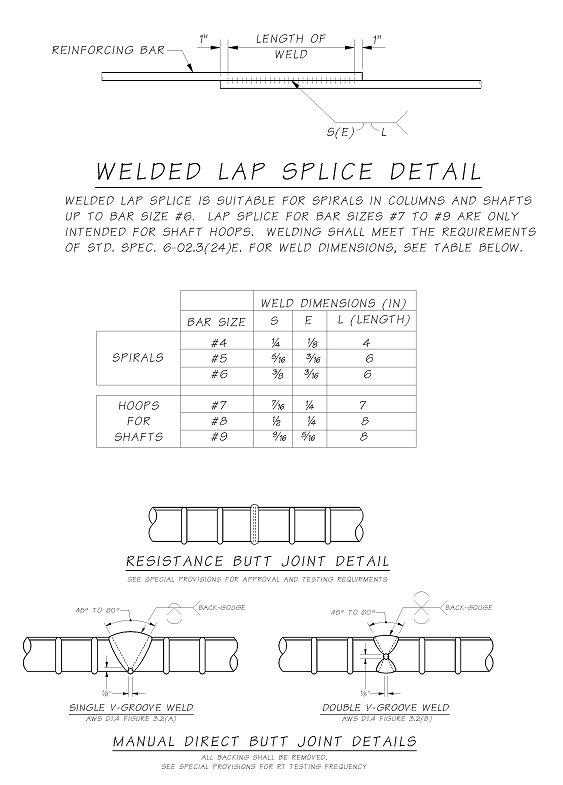
Potential List of
Ultimate Couplers for Hoops: Headed Reinforcement Corp. (HRC) Xtender Series 500 Coupler 1 BarSplice BPI-GRIP XL 2 Dextra Bartec
Position Splice 3 Erico Lenton Plus Position Coupler 3 HRC 490
Position Coupler 3 1 This coupler works without threading the rebar. It is relatively short compared to other
couplers. Both shop and field
installation is possible. This is not currently on the QPL. 2 Portable presses are available for field swaging. 3 Some threaded or long couplers may not be practical except for very large diameter hoops. Threading ends of formed hoops may be difficult or not fit proprietary threading machines. Threading bars prior to forming hoops is acceptable if threads are not subsequently damaged. All threaded couplers require the position type for hoops.
Reference to preferred confinement method (spirals) can be found in the latest edition AASHTO Guide Specifications for LRFD Seismic Bridge Design C8.6.3. There is considerable construction history using spirals. Additionally, the requirement for spiral or butt-welded hoops for plastic hinge regions, where displacement ductility is greater than 4 can be found in section 8.8.7. The long standing practice of using welded lap splices for spirals is currently acceptable under the Structural Welding Code – Reinforcing Steel AWS D1.4 up to bar size #6. Testing was recently performed at the materials laboratory in Tumwater for bar sizes up to #9. All tests achieved full tensile capacity (including 125% of yield strength). These results substantiate the use of welded lap splices for hoops up to bar size #9, provided they are not located in plastic hinge regions. Until welded lap splices for hoops are allowed by the seismic design code in plastic hinge regions, they should not be used in such fashion. Do not use #10 or larger lap welded hoops without further testing. Resistance butt-welded hoops are currently available from Caltrans approved fabricators in California. The cost should be comparable to the welded lap splice, so it may prove to be an economical substitution to the welded lap splice. The manual direct butt weld per AWS D1.4 fig. 3.2, including radiographic examination, is cost prohibitive for large quantities. Ultimate couplers should have a cost advantage over manual direct welds plus testing, and also allow current cage construction practices. There is an ongoing study for fabricating fixed hoop reinforcing cages. Information from this study will be forthcoming.
cc: Mohammad Sheikhizadeh, Bridge Construction - 47354
|
